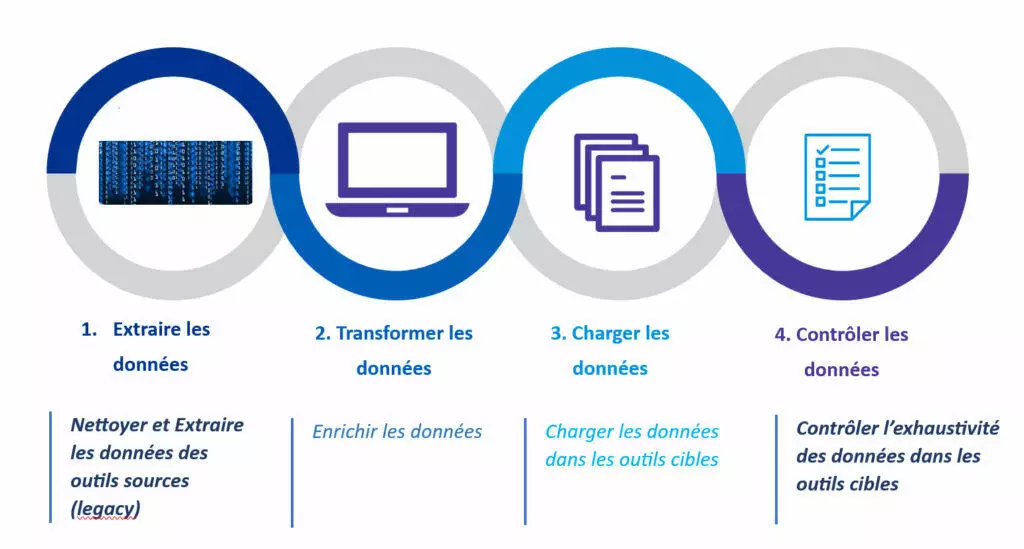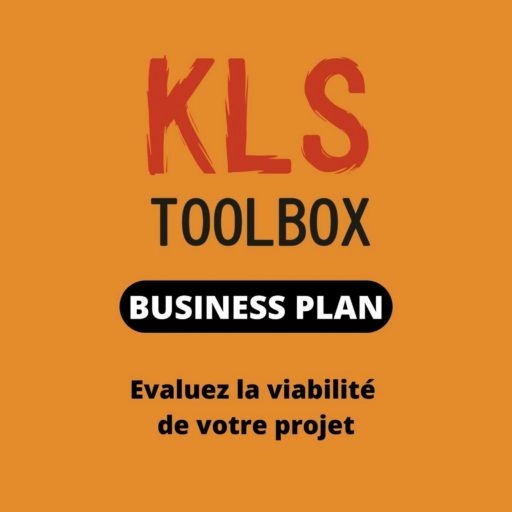INTRODUCTION
Financial data migration projects are key, strategic projects for companies. The aim is to move financial information from one or more legacy source systems to one or more target systems.
THE ISSUES: WHY MIGRATE YOUR DATA ?
A financial data migration project is a complex and often essential initiative for companies. There may be several issues or motivations for the company undertaking the project:
| Modernising their systems and meeting growth needs | Older systems may no longer meet today's demands for speed and flexibility. |
| Improve operational efficiency and guarantee the integrity and availability of financial data | A modernised system can automate manual processes, reduce errors and increase data reliability. |
| Streamlining expense items by unifying information systems | Consolidating systems can reduce maintenance and licence costs. |
| Enhancing safety | Modern systems generally offer enhanced security measures to protect sensitive data. |
| … |
This type of project is often vital for companies because it must guarantee the continuity of financial and operational operations. At the same time, it must improve the quality, availability and security of data, and enable greater efficiency in the processing of certain operations.
BEST PRACTICE IN DATA MIGRATION
The success of a migration project depends on meticulous planning and close collaboration between the various parties involved: IT teams, financial teams, business teams and change management teams.
Here are the key stages to be guaranteed from the start of the project:
| Analyse to understand the source data in order to plan the migration. | |
| Define the objectives clear signs of migration | |
| Selecting tools and methods transfer options best suited to your needs and budget | |
| Go to rigorous testing to guarantee the integrity and accuracy of migrated data |
The key to success of a financial migration project is based on the proactive planning and management difficulties encountered during operations: loss of data, unpredictable behaviour of target systems, unavailability of project resources, service interruptions, incompatibilities between systems, etc.
Once the migration is complete :

The work doesn't stop there, however. Post-migration monitoring (run) has to be put in place to ensure that the data is recovered correctly, that the systems are working optimally and, above all, that the users are on board with the new systems.
Contrary to popular belief change management represents 80% of a successful migration project.
You need to bear in mind that you can implement the most technically innovative tool in the world. However, users may not buy into it, in which case your tool/innovation will be useless.
DATA MIGRATION IN 4 STAGES

🛠️ EXTRACTING DATA
This preparatory stage, often time-consuming and often not taken seriously, is that of the data cleansing. It is essential to clean up the source data before switching over. A data migration project is not a magic operation. You know the expressionbullshit In, bullshit Out" ?
For example, if you have the wrong customer address in your source base you will migrate the same bad address to the target base. So take the time to clean up your data. Data Cleansing ". These operations extracting data from source tools must guarantee :
- Data completeness all data must be preserved.
- Data integrity Ensuring reliability, paying particular attention to sensitive data (e.g. bank details).
- Data quality Data cleansing is crucial.
🛠️ TRANSFORMING DATA
In very graphic terms, we can imagine that the source system uses a language different from that of target system and in fact the objective of the transformation is to provide a translation that enables the target audience to understand the original language.
This step will enable the data extracted in the previous step to be enriched and applied :
- Management rules specific to the company and its needs
- The mappings and repositories to enable translation into the target language.
These elements are recorded in functional specifications by the business teams.
🛠️ LOADING DATA
Once extracted and processed, the data will have to be integrated into target systems according to very strict rules (file format, import template, etc.). If these rules are not complied with, the data will be either totally or partially rejected. In this case, analyses must be carried out to understand the source of the rejection and a new iteration must be run until the " acceptable threshold". to validate the migration (threshold to be defined upstream - e.g. for a master data client containing 100 customersit will be considered acceptable if you enter 98% of the database, i.e. 98 customer records)
✅ CONTROLLING DATA
The objective here is very simple compare data from source systems with those of target systems (e.g. you can compare the number of customer records in the two environments).
In the same way as the previous step, iterations must be repeated until we obtainan acceptable threshold. In the case of large volumes, when insignificant discrepancies are identified on one or more accounts in the target, it is also common practice to make accounting entries (OD) directly in the target systems in order to correct the discrepancies and thus balance the accounts.
The control stage is the most important, as it ensures that all the data is transferred correctly. It is important to trace all the actions carried out in order to facilitate the management of the data. migration audit work. Your statutory auditors will have to approve the transfer of your data.
XTEP BEST PRACTICE
A few tips for establishing the appropriate migration strategy for your data migration project:
| N° | GOOD PRACTICE |
| 01 | Identify existing data to be migrated SI Sources, Volumes, Data Owner... |
| 02 | Have the right tools for extracting and transforming existing data The ability to extract source data and transform it into the target formats required. |
| 03 | Defining the schedule Definition of the schedule for the development activities required for the data migration. Alignment of project phases and deployment method. |
| 04 | Ensuring the stability of the perimeter and structuring reference systems stability of source and target data, and identification of the mappings to be built. |
| +++ | The scope, approach, tool(s), specific features, migration schedule, changeover plan, responsibilities, committee structure, control and validation process(es), etc. |
CONCLUSION

Data migration is a complex and crucial adventure for any modern business. It's at the crossroads between technology and strategy, where every step counts. To guarantee success, invest in meticulous data cleansing from the outsetLearn from the mistakes and successes of others, and above all, don't hesitate to call on our team of data migration experts.
At XTEP, Our data migration experts are on hand to provide you with the advice, support and tools you need to ensure the success of your data migration projects.
Contact us to find out more and to help you better understand how to optimise your purchasing costs and profitability!




